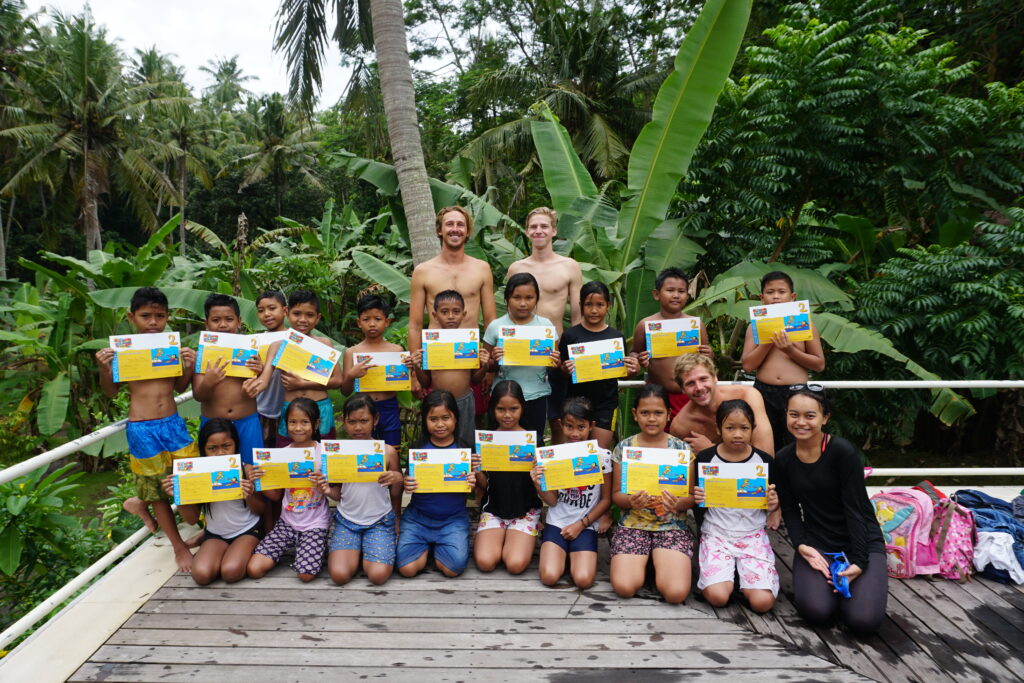The goal of the Swimdo Child Drowning Prevention Program is to reduce the rate of child drowning throughout Indonesia and the world.
Program Highlights
To achieve our mission we focus on three main strategies
Eligibility
In order to have the most impact possible, we target at-risk communities where we both open swim schools and conduct satellite programs with partner organizations throughout Indonesia.
Sessions
Our Swimdo Survival Swimming and Water Safety programs are offered to school-age children over the course of one month. In this period, students attend 10 classes in which we cover all of the skills to protect themselves from the dangers of drowning.
At the end of the curriculum, students are tested on their abilities and knowledge. These tests are conducted to meet and exceed global standards for survival swimming and water safety competency.


